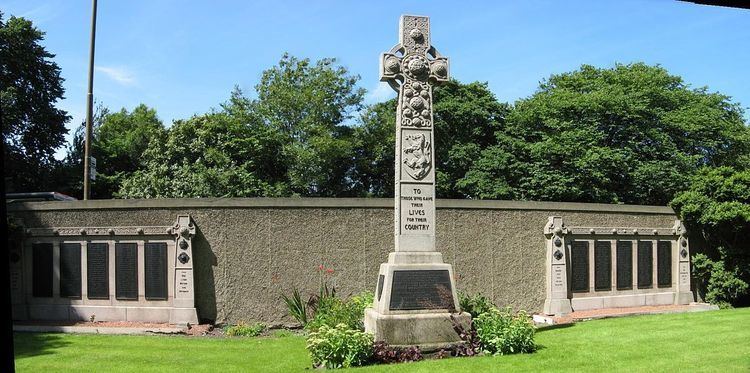Established 1846 Country Scotland, UK Founded 1846 Burials Robert Nisbet | Type Public Phone +44 131 664 4314 | |
 | ||
Size 4.37 hectares (10.8 acres) Similar | ||
Rosebank Cemetery is a 19th-century burial ground in Edinburgh, Scotland. It is located at the junction of Pilrig Street and Broughton Road in the Pilrig area, close to the historical boundary of Leith. The cemetery is protected as a Category C(s) listed building.
Contents
History
The cemetery was developed by the Edinburgh and Leith Cemetery Company, with David Cousin as architect, and opened on 20 September 1846. It covers an area of 4.37 hectares (10.8 acres). Originally known as the Edinburgh and Leith Cemetery, the cemetery proved popular and was extended eastwards around 1880.
The main entrance was originally from the north-west (Broughton Road) but this has been sealed. The sole entrance is now from the north-east (Pilrig Street). The latter originally had an entrance lodge above the gate, but this was demolished around 1975.
The cemetery was in independent private ownership until around 1980 when the City of Edinburgh Council then took over the grounds.
Memorials
A large memorial at the furthest point lying against Broughton Road wall near North Pilrig Heights marks a mass grave and commemorates the Gretna rail disaster of 22 May 1915, in which 215 soldiers of the 1st/7th Battalion The Royal Scots were killed. The men, mostly from Leith, were on their way to board ship at Liverpool in order to travel to the battlefront at Gallipoli. The handful of survivors were sent onwards the following day. The bodies of those killed in the railway disaster were returned to Leith and buried with great aplomb on 24 May with the 15th and 16th battalions Royal Scots serving as guard of honour. These are among 270 First World War casualties and 36 Second World War casualties interred at Rosebank.
A number of 19th-century merchants and ship owners from Leith are buried at Rosebank. There are also several 20th-century Sikh and Islamic burials.
Those who are homeless and die on the street along with several stillborn children (Scots law requires burial not cremation) are buried at the cemetery. The latter are marked by a modern monument giving a place to remember them, in interlocking granite pieces representing mother and child. The inscription reads "to all those children never known but always loved".
An abnormally high number of stones are noted as "drowned" or "lost at sea" (see Notable Interments). Other strong maritime links are evidenced in the high number of Shipmasters, Shipowners, Shipchandlers etc.
